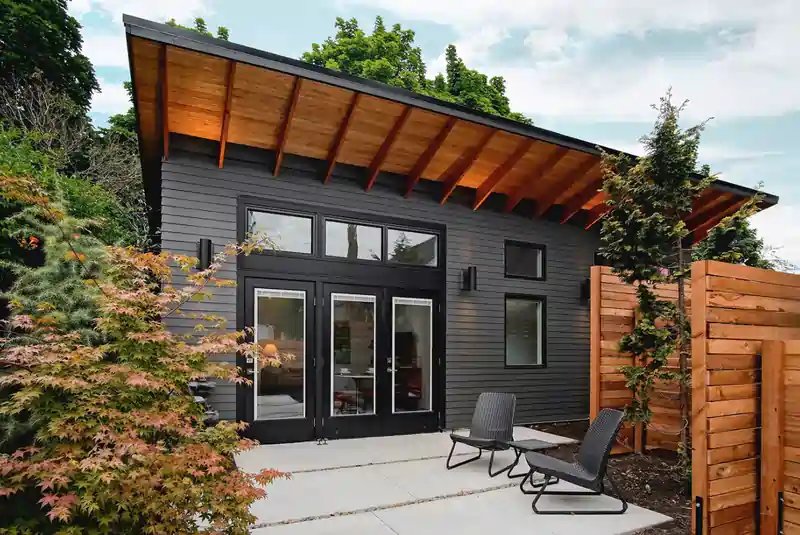
Overview of Accessory Dwelling Units (ADUs) in Single-Family Homes
Accessory Dwelling Units (ADUs), sometimes referred to as “mother-in-law units” or “guest apartments,” are self-contained living spaces within a single-family home. They include their own private bathroom and kitchen and have separate exterior access. ADUs can be either attached to or detached from the main house and may be situated above or below ground level.
Essential Features of an ADU:
- Amenities: An ADU is equipped with a full bathroom and a kitchen that includes cabinets, a food preparation counter, a sink with running water, and a stove or stove hookup. Note that appliances like hotplates, microwaves, or toaster ovens do not qualify as stoves. Removing the stove does not alter the classification of the space as an ADU.
- Structure: A property can have only one ADU, which must have a distinct entrance for entry and exit. Merely having an additional kitchen does not qualify as an ADU.
- Regulations: ADUs must adhere to local zoning and land use regulations and should be customary for the area. Zoning violations related to ADUs are not permitted.
ADU Guidelines:
- Fannie Mae: Allows an ADU only if the property is a single-family, one-unit residence.
- Freddie Mac and Non-Agency: Permit one ADU if the property is a single, two, or three-unit residence.
The appraisal report must detail whether the ADU conforms to zoning and land use regulations (either legal or legal non-conforming) and if it aligns with local norms.
Non-Permitted ADUs:
An ADU built without a permit but compliant with zoning may still be considered under specific conditions:
- The property must be a single-family, one-unit residence.
- The appraisal must show that such unpermitted improvements are typical for the area by comparing at least two similar properties with unpermitted ADUs.
Characteristics of an ADU:
- Size: The ADU should be smaller than the primary dwelling.
- Features: It must have its own means of entry and exit, a kitchen, living area, and bathroom. A separate bedroom is not necessary; studio-style ADUs are acceptable.
- Access: While an ADU may provide access to the primary dwelling, it must not be solely accessible through the primary dwelling or lack privacy.
Examples of ADUs:
- Area above a garage
- A living space in a basement
- A small extension to the main house
Determining Property Classification:
The classification of a property as a one-unit dwelling with an accessory unit or a multi-family property depends on various factors, such as:
- Separate utility meters
- Unique postal addresses for each unit
- The legal status of renting out the separate unit
Appraisers should clarify how they determined whether the additional living area qualifies as an ADU or a multi-family unit.
Correctly understanding and identifying ADUs is vital for accurate property valuation and adherence to lending guidelines. By following these standards, appraisers can ensure precise and consistent evaluations for properties with ADUs.

